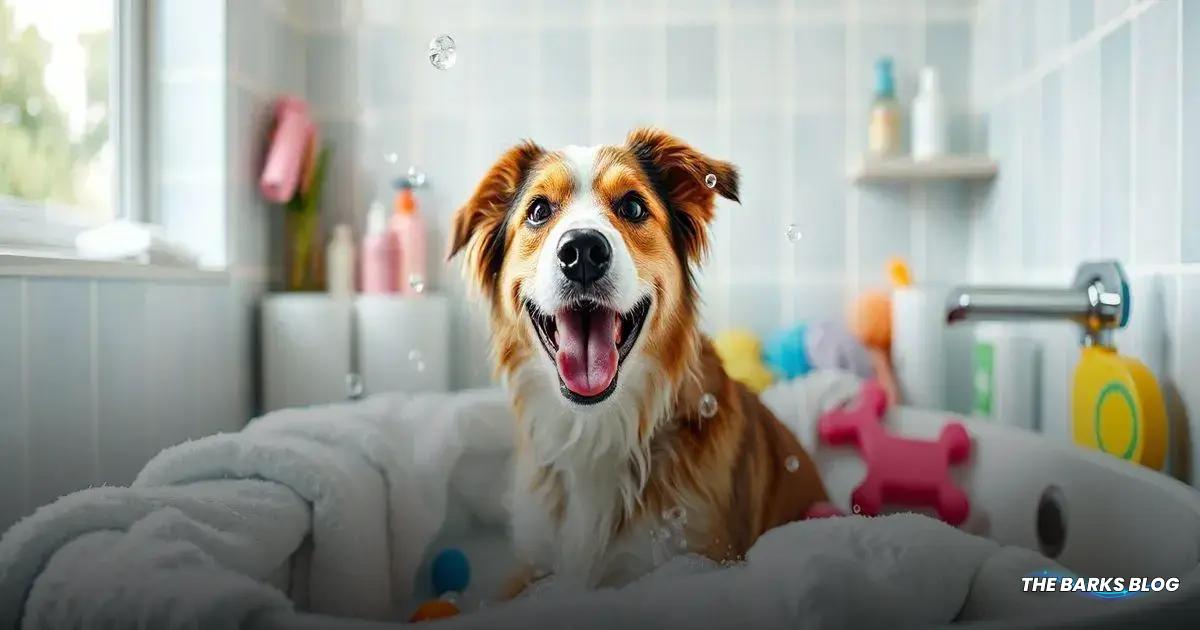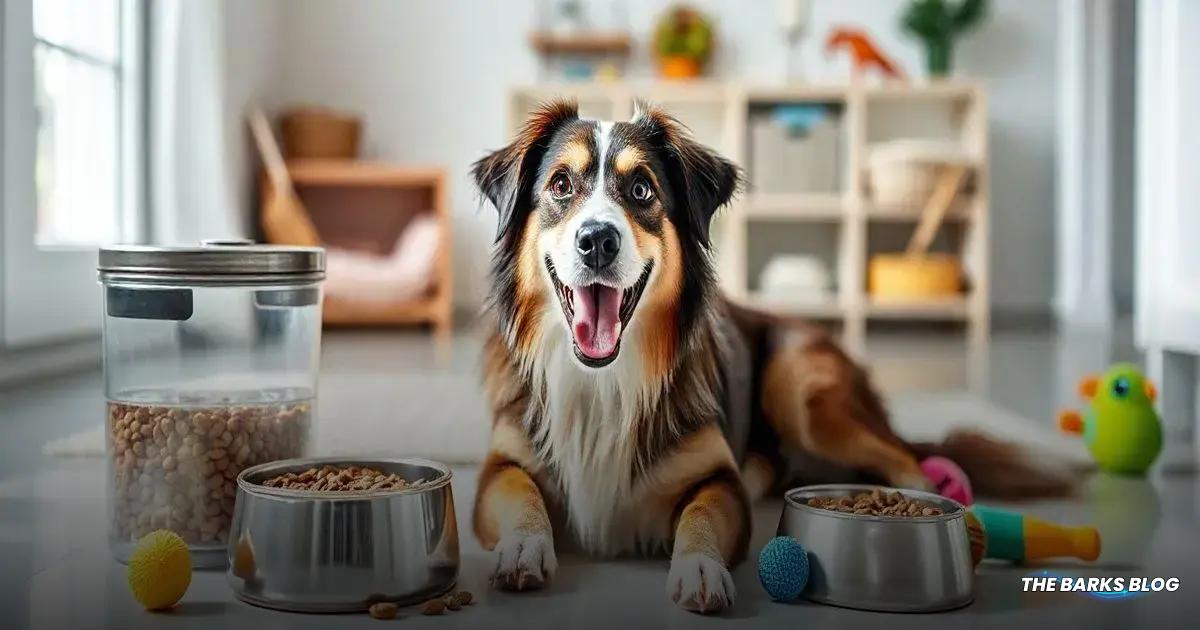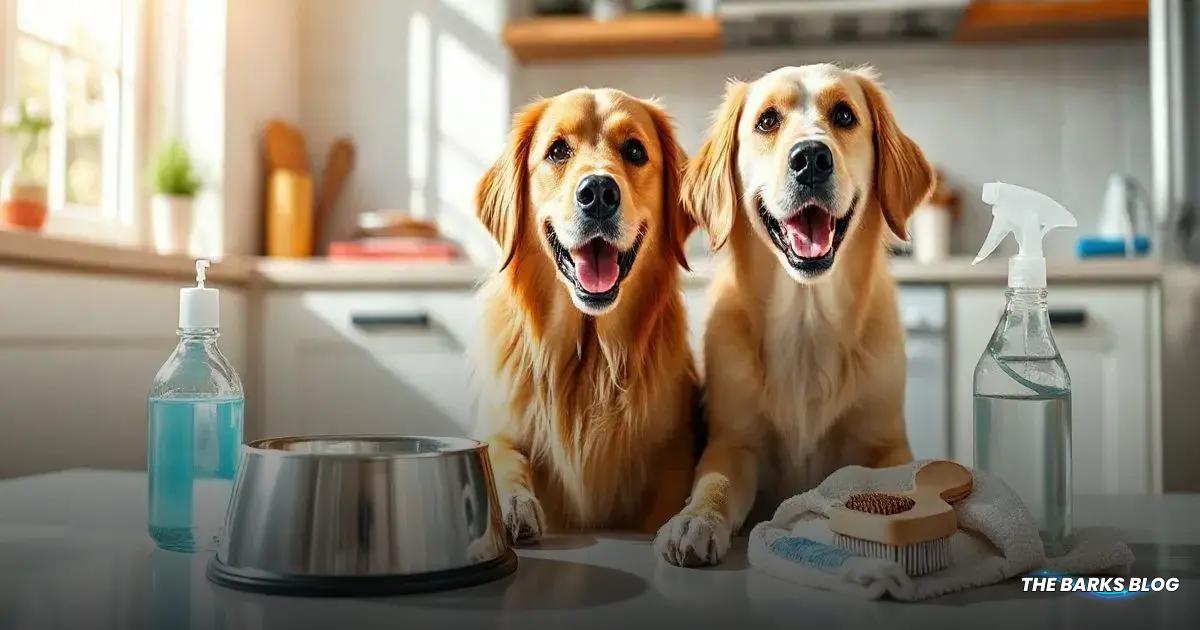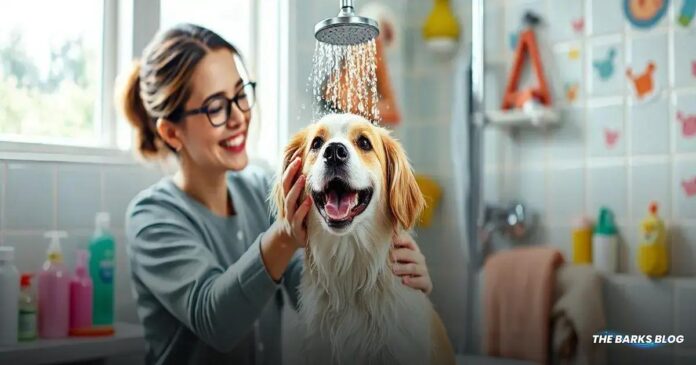Keeping your dog clean is crucial for their health and well-being. Essential practices include regular bathing, washing bedding and toys, proper food storage, flea and tick prevention, and maintaining dental hygiene. By prioritizing these hygiene tips, you can ensure a happy, healthy dog and protect your family from potential health risks.
A clean dog is typically a healthy dog, and every pet parent desires a happy, healthy fur baby! While wild dogs manage their own hygiene, domesticated dogs need extra care due to their close contact with humans and other pets. To ensure your dog stays clean and healthy, follow these 5 essential dog hygiene tips!

Wash Your Pet, Their Bedding & Toys Regularly
1. Wash Your Pet, Their Bedding & Toys Regularly
Keeping your dog clean is essential for their overall health. While there’s no strict rule for how often to bathe your pup, it’s generally recommended to wash them at least once every 12 weeks. If your dog tends to get muddy or has skin issues like yeast overgrowth, you can bathe them weekly with a gentle shampoo. This practice helps remove dirt, dead skin cells, and debris, promoting a healthy coat.
Brushing your dog daily also plays a crucial role in hygiene. It helps dislodge any grime and distributes the natural oils produced by their skin, keeping their fur shiny and healthy.
PetLab Co Pro Tip: Don’t forget about your dog’s ears! Regular ear cleaning is vital, and some dogs may even need it daily. Ears can harbor yeast and bacteria that lead to infections. For tips on ear cleaning, check out How To Clean Your Dog’s Ears.
Their Bedding: Dog beds can quickly become dirty and a breeding ground for fleas. It’s essential to wash your dog’s bedding weekly at a minimum of 130°F using a gentle, fragrance-free detergent. Ensure the bedding is completely dry before letting your dog use it again.
Regular vacuuming is also important. Aim to vacuum at least once a week, especially in the areas your dog frequents, to keep your home clean and free from parasites and hair.
Their Toys: Toys can accumulate bacteria, especially since they often end up in your dog’s mouth. To keep playtime safe, wash soft toys in the washing machine at 130°F with a gentle detergent once a month. For hard toys, use a diluted bleach solution or a vinegar-water mix to sanitize them, but remember to rinse them thoroughly afterward to avoid any harmful residues.
By regularly washing your pet, their bedding, and their toys, you can help ensure a clean and healthy environment for both your dog and your family.

Store Pet Food Correctly
2. Store Pet Food Correctly
Let’s be honest—dog food doesn’t always have the best smell, and when exposed to heat, light, and air, it can spoil quickly. Just like you wouldn’t eat food left out overnight, your dog deserves better too! Proper storage is essential to keep your pup safe and healthy.
Dry dog food can become contaminated with bacteria like Salmonella, which can even be transmitted to humans through your dog’s mouth. To prevent this, always store dry food in airtight containers to keep it fresh and safe.
For canned dog food, once opened, it should be covered or transferred to an airtight container and refrigerated for up to three days. Any leftovers after this period should be discarded to avoid spoilage.
Raw foods pose an even higher risk of bacterial contamination. They should be used within 1-2 days of opening or thawing. If you freeze raw food, it can last for about six months, but make sure it’s well-sealed and wrapped to prevent freezer burn.
Always check the storage guidelines on the dog food packaging. This is your best resource for understanding the specific storage conditions and spoilage dates for the food you buy, ensuring your dog is fed safely.
PetLab Co Pro Tip: Avoid storing open food in the garage or outside. This can attract rodents and other pests, which can contaminate your dog’s food with feces and parasites. Keeping your dog’s food safe and clean is essential for their health!
For more information on how to store dog food safely, check out our Essential Guide On How To Store Dog Food Safely.

Wash Their Food Bowls
3. Wash Their Food Bowls
How often do you wash your own dishes? After every meal, right? This habit is crucial for maintaining hygiene and health. However, many pet owners don’t apply the same principle to their dog’s food and water bowls!
If you don’t wash your dog’s water and feeding bowls after each meal, you’re allowing bacteria to thrive in the bowl. This bacteria can easily transfer to your dog’s mouth and, eventually, into their system. Once ingested, it can access all the organs in your dog’s body, making them vulnerable to infections and diseases.
PetLab Co Pro Tip: To make cleaning easier, consider having spare food and water bowls. With extra bowls on hand, you can alternate them while the dirty ones are being cleaned. We know life gets busy, especially as a pet parent, so this simple trick can give you more flexibility.
Cleaning your dog’s bowls regularly is a small effort that can lead to significant health benefits for your furry friend. Remember, a clean bowl means a healthier dog!

Get Diligent With Flea And Tick Prevention
4. Get Diligent With Flea And Tick Prevention
Regular flea and tick control is an absolutely vital aspect of responsible pet ownership. These pesky parasites can not only cause discomfort for your dog but can also spread diseases to both your pet and your family. Dogs can easily transmit fleas and ticks to humans and children, making prevention a top priority.
Prevention is much simpler than dealing with an infestation. If your dog isn’t already on a regular anti-parasitic treatment, it’s time to consult with your vet to establish a suitable flea and tick prevention routine. There are various options available, including:
- Tablets: Oral medications that can be given monthly.
- Topical treatments: Oily substances applied to the back of your dog’s neck, usually required every few weeks.
- Injections: Administered by your vet, providing long-lasting protection.
Fleas can quickly become a nuisance, and they’re not just unhygienic; they can also lead to more serious health issues for your dog. By staying diligent with flea and tick prevention, you keep your dog comfortable and your home pest-free.
Remember, a proactive approach is key. Regularly check your dog for signs of fleas and ticks, especially after outdoor activities. Keeping your furry friend protected will ensure they stay happy and healthy!
Our Final Thoughts On Keeping A Clean Dog
Maintaining a clean dog is crucial for ensuring their overall health and well-being. By following these hygiene tips, you not only keep your furry friend happy but also protect your family from potential health risks.
Regular bathing, proper food storage, consistent bowl cleaning, diligent flea and tick prevention, and dental care are all essential practices that contribute to a healthier lifestyle for your pet.
Remember, a clean dog is often a healthy dog, and the effort you put into their hygiene will pay off in the long run. Make it a routine to check in on your dog’s cleanliness and health, and you’ll foster a happy, thriving companion.
Together, let’s keep our dogs clean, healthy, and loved!
FAQ – Frequently Asked Questions about Dog Hygiene
How often should I bathe my dog?
It’s generally recommended to bathe your dog at least once every 12 weeks. However, if they get muddy or have skin issues, you can bathe them weekly with a gentle shampoo.
Why is it important to wash my dog’s bedding and toys?
Dog bedding and toys can collect dirt, bacteria, and parasites. Regular washing helps maintain hygiene and prevents health issues for your dog.
How should I store my dog’s food?
Dry dog food should be stored in airtight containers to keep it fresh. Canned food should be covered and refrigerated after opening, while raw food should be used within 1-2 days of thawing.
How often should I clean my dog’s food and water bowls?
You should wash your dog’s food and water bowls after each meal to prevent bacteria growth and keep your dog healthy.
What are the best methods for flea and tick prevention?
Consult your vet for suitable flea and tick prevention methods, which may include oral tablets, topical treatments, or injections.
How can I help maintain my dog’s dental hygiene?
Brush your dog’s teeth two to three times a week using dog-specific toothpaste, and consider using dental mouthwash daily to prevent plaque buildup.




